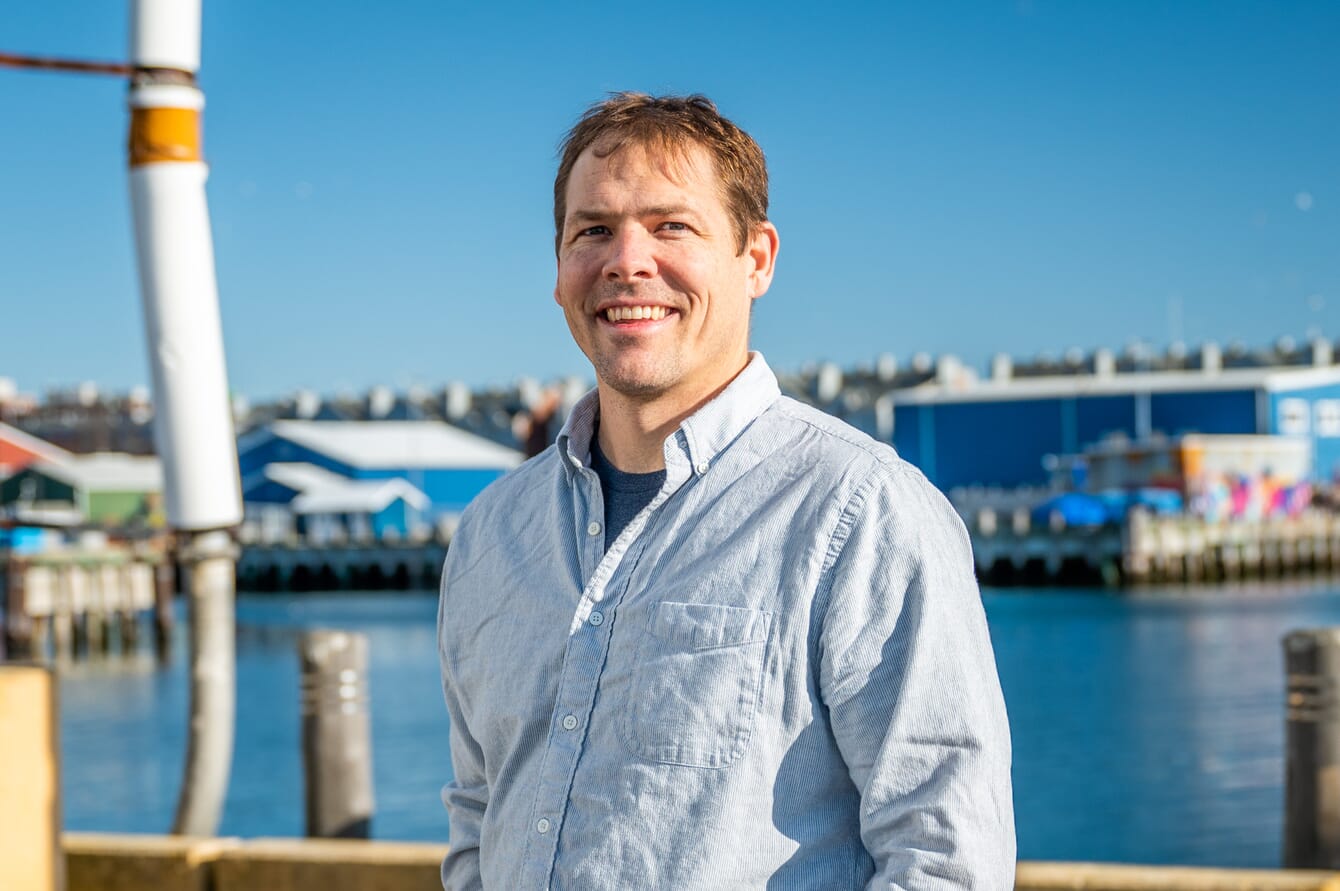
© Running Tide
Can you tell me a bit about your background?
I’ve spent my entire working career on ocean-related enterprises, with more than 20 years of government, non-profit, education and industry experience in the ocean realm. Much of this time has been spent in the fisheries-related sector, from working as a fisheries observer in the Bering Sea, to supporting small-scale fishermen all around the world. When I moved to Maine nine years ago, I was eager to find a locally-based effort that combined my passion for the ocean with my growing entrepreneurial interests. I found the perfect fit at Running Tide, where I’ve had the chance to work at a scrappy and motivated startup building innovative aquaculture systems, ocean health monitoring technologies, and developing new markets in this rapidly evolving ocean space. In the four years I’ve been here, we’ve grown, we’ve altered course, and we’ve seen some amazing progress as we develop new products for our evolving world.
What have been the company’s major milestones to date?
For a company of our size and stage, we’ve had some pretty significant accomplishments. In 2023 we delivered the world’s first open ocean carbon removal credits to Shopify. We were granted the first ocean carbon removal permit from the government of Iceland, which was notably signed by the minister of the environment himself. We have recently made inroads with a number of companies building major ocean infrastructure projects to monitor ocean health impacts and biodiversity. We are also proud to say that we are Microsoft’s first ocean carbon removal provider. We launched the world’s first ever ocean carbon removal measurement and verification system, and are the first company to develop a full stack data system to operate at internationally recognised standards, and to gain a Big 4 auditor to our credit generating stack.
What are the key challenges that still need to be overcome?
We have the talent, science, technology and protocols in place to make meaningful progress towards ocean health restoration – but we can’t implement our system without global regulatory frameworks that give us, and other ocean stewards, permission to operate. Time is running out, and we need to take urgent and decisive action to safeguard our planet, yet existing frameworks were not developed with climate change and positive interventions to combat it in mind. We are prepared to work with all stakeholders, from others in the industry to coastal community leaders, to countries and multilateral organisations to develop global regulatory frameworks and mechanisms for oversight that ensure all ocean stewards are acting responsibly and in line with best available science.
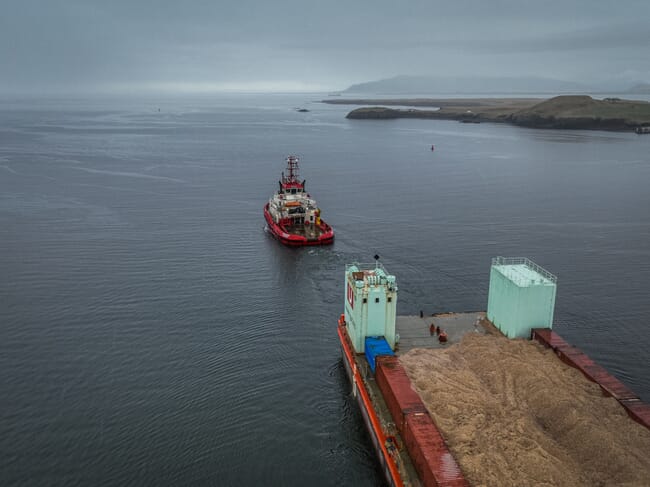
© Running Tide
What’s your main focus and how will this change over time?
Our current primary focus area is on delivering high-quality carbon removal credits through the sinking of terrestrial biomass that has been coated with alkaline materials to both remove carbon and combat ocean acidification. However, the potential of macroalgae in removing carbon at an Earth systems-level makes up a significant portion of our concurrent research efforts, and we anticipate that macroalgae will be increasingly integrated into our operations in the coming years.
We are also working to expand our scope through additional biodiversity and ecosystem service solutions, which we will eventually offer as products like biodiversity credits. But again, these are all components of a broader system that we are looking to refine, optimise and incrementally scale.
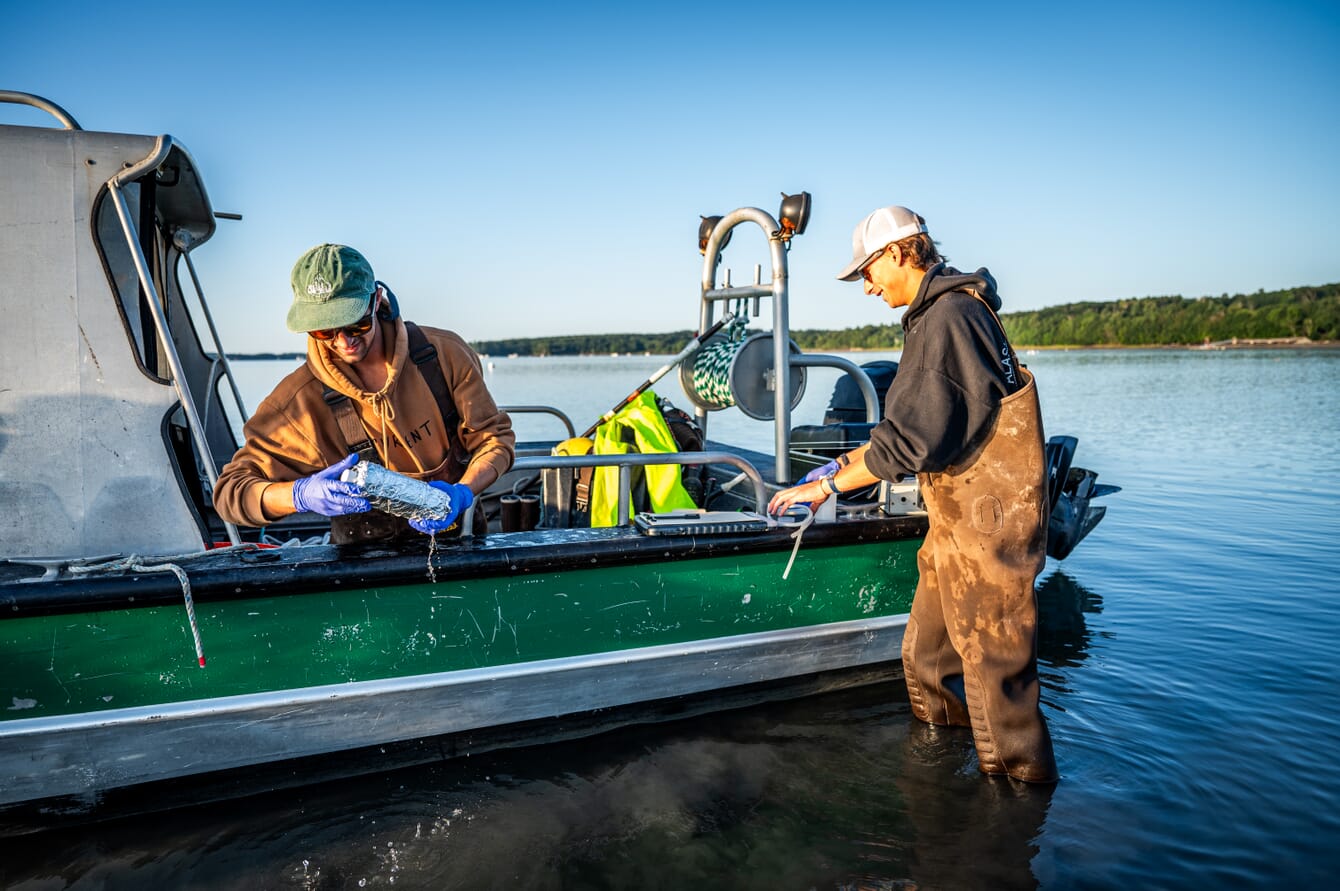
© Running Tide
What made you pivot from your initial plans to sink seaweed?
All along, our plan has been to amplify the great things the ocean already does, to robustly quantify them, and then package the data in a usable format. That started from day one, building state-of-the-art oyster growing platforms using robotics, machine vision and real-time dashboarding of the data. We always wanted to tap into the ocean’s carbon removal capabilities, but there just weren’t markets for it back in 2018. That changed in 2020, when companies like Shopify and Stripe put out RFPs (requests for proposals) for durable carbon removal projects in an effort to stimulate innovation in the carbon removal space.
We went after those early contracts, made it through their scientific review process and landed those early pre-purchase agreements. Since then, the carbon removal space has grown dramatically, but there is still a long way to go for this industry to make a meaningful dent in the global carbon budget. Every day, more than 30 million tonnes of carbon dioxide are absorbed into the ocean. That goes on to drive ocean acidification in addition to the warming we are seeing around the globe. Within the next five years, we want to remove a single day’s worth of carbon dioxide from the ocean, and build from there.
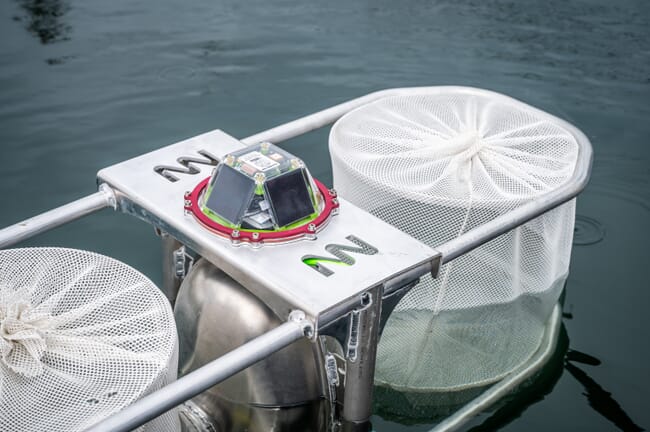
These buoys, built in-house by Running Tide's engineers, send underwater images via satellite in real time © Running Tide
Can you paint a picture of how your operations – from sinking wood pulp to farming seaweed and shellfish – complement each other?
All of Running Tide’s activities are grounded in the core principle of improving ocean health. Rather than viewing our operations as individual initiatives, we see them as interconnected parts of an Earth systems-level approach. That is why we have pioneered advanced ocean health diagnostics, monitoring, quantification, and verification technologies in order to better understand ocean health conditions, optimise our interventions and ensure that they positively impact ocean health.
Our operations also include the continuous development of innovative products that function within this systems-level strategy. While our primary focus has been on delivering high-quality carbon removal credits through terrestrial biomass sinking and ocean alkalinity enhancement, we are actively working towards a future state in which other nature-based solutions, like kelp reforestation, are integrated into our system. More than that, by bridging the gap between nature and capital, we are cultivating a sustainable economic model that prioritises and funds the restoration of vital marine ecosystems.
Will these activities take place at a specific site or a range of sites and what will these sites look like?
Our carbon removal operations are currently deploying from our facilities in Iceland, while our additional research facilities include our Ocean Mind Hub at our headquarters in Maine, and a macroalgae hub in Akranes, Iceland. We are also working towards a multi-continent international expansion in order to optimise and amplify our positive impact on ocean health and ensure widespread and lasting outcomes.
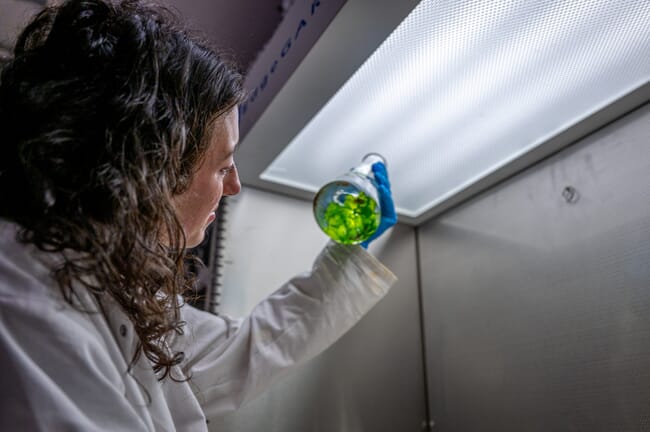
The potential of macroalgae in removing carbon at an Earth systems-level makes up a significant portion of Running Tide's concurrent research efforts © Running Tide
What are your views on blue carbon credits?
Our general view on any kind of ocean-generated credit is that they need robust quantification and verification. As more energy and research goes into quantifying, modelling, and sea-truthing the beneficial impacts of shellfish and seaweed, I think there will be a range of credits that could be available, from carbon, to nutrients, to biodiversity.
What’s your business model?
Fundamentally, we connect capital to coastal and marine ecosystems so that we can deploy interventions that meet the scale of this monumental climate problem. In order to do this, we have developed a platform to fully diagnose, measure and monitor ocean health, and quantify and verify any ocean health interventions. This cutting-edge platform enables us to deploy and document the positive impact of interventions, which we can then sell to companies and organisations as carbon credits to meet their ESG goals and become part of the climate solution. We are also in continued development of quantification and verification systems for other ocean health metrics, for which we intend to eventually sell corresponding credits, such as biodiversity credits.
What’s the fundamental vision of Running Tide?
Our vision is an abundant, diverse and thriving planet for future generations to come. Abundance can only occur when we have healthy oceans, a balanced carbon cycle, and vibrant coastal communities. It’s ambitious, but it’s our underlying motivation.
How has the company been funded to date and when are you likely to be looking to raise more funding?
Over the last six years we’ve raised more than $70 million and all of that has been put into building the science, technology and team to pioneer and do initial deployments and testing of our monitoring and verification platform and interventions. Now it’s a question of further iterating, optimising and scaling to meet the full challenge of the future.
What do you hope to have achieved by the end of the decade?
Running Tide is working to build a world in which ocean health interventions, including carbon removal and ecosystem restoration, are part of every sector and every community, and every action is part of the solution. Ocean degradation impacts all living things, and at Running Tide we are exploring numerous pathways for restoring it to full health and productivity. The IPCC has repeatedly called for 660 gigatonnes of carbon removal by 2050 as part of the climate change solution, so by the end of the decade we aim to be operating on multiple continents, engaged in both carbon removal and ecosystem restoration, and in partnership with hundreds of coastal communities towards that goal.




